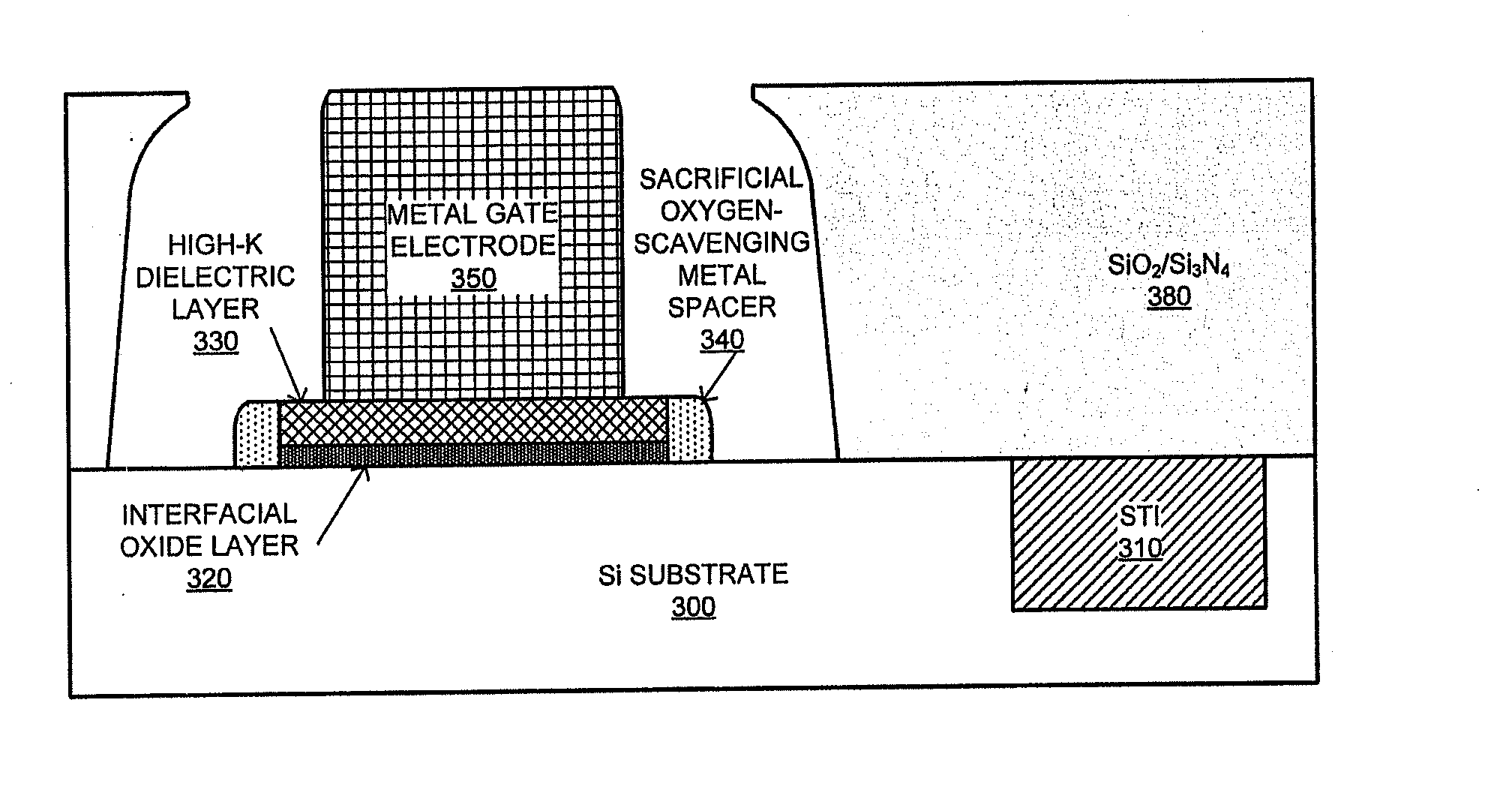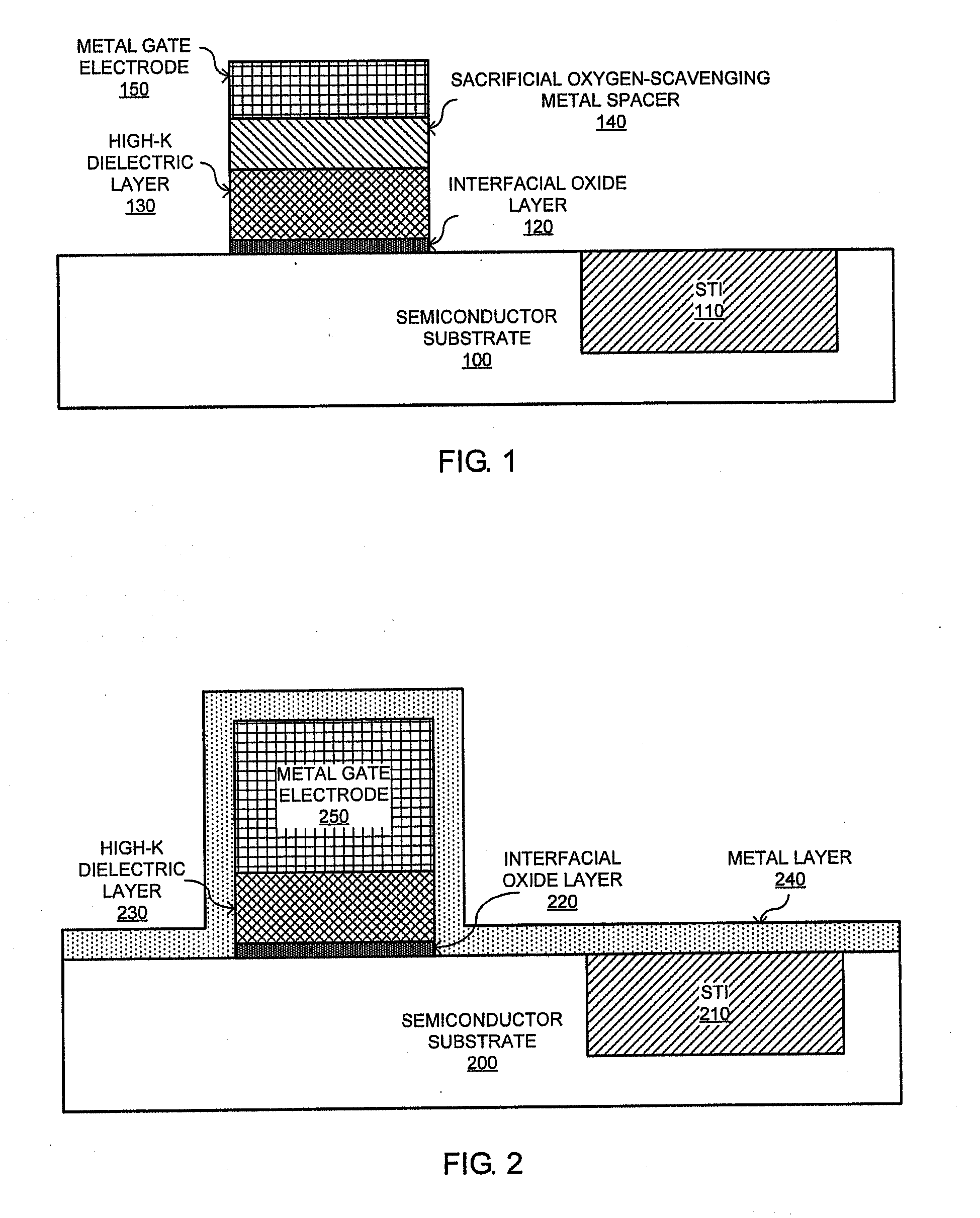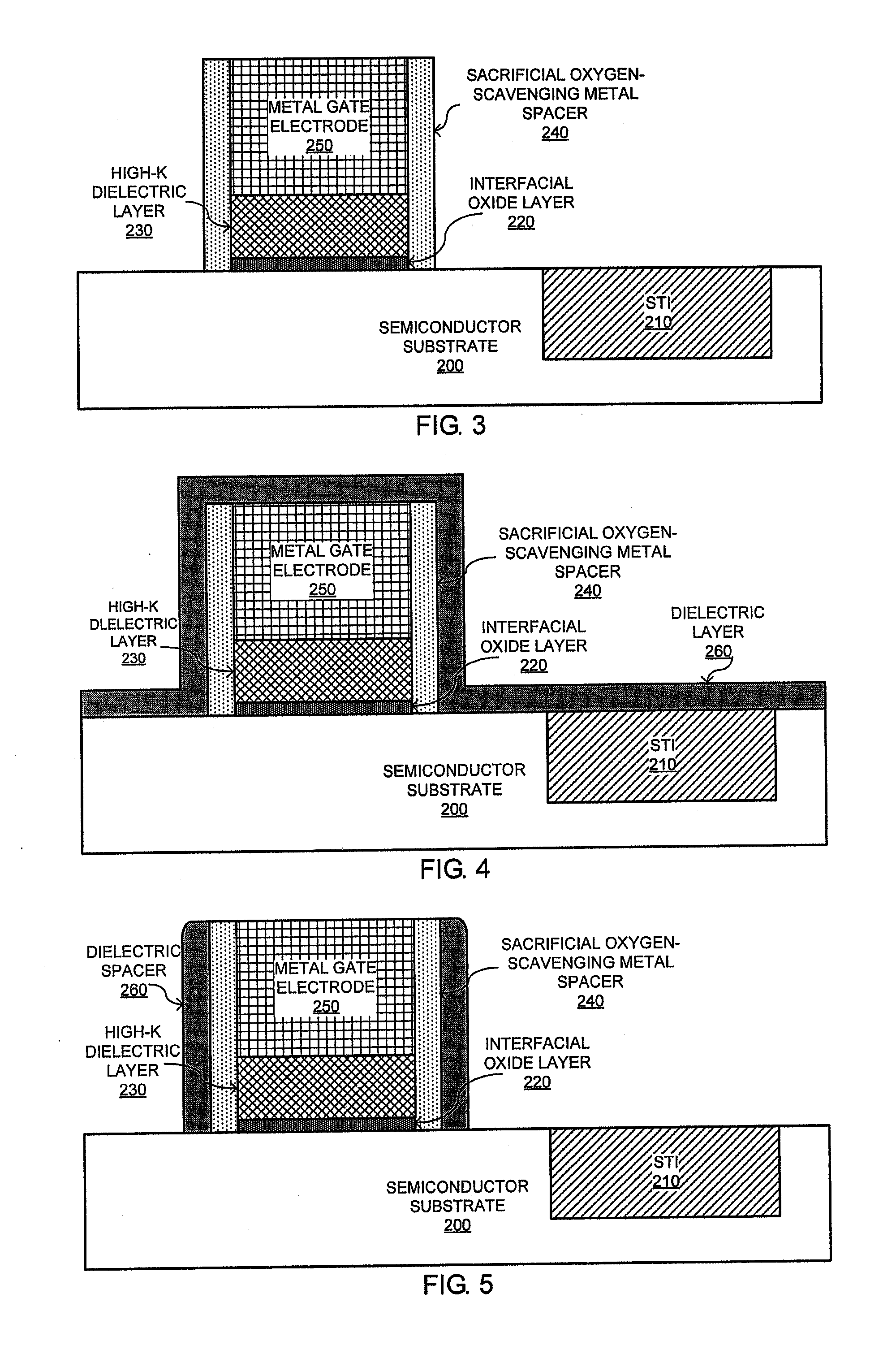Manufacturing method of gate stack and semiconductor device
a manufacturing method and gate stack technology, applied in the field of semiconductor technology, can solve the problems of difficult to achieve eot1 nm, small eot is difficult to achieve, and the layer might not be fully formed, and achieve the effect of unstable work function
- Summary
- Abstract
- Description
- Claims
- Application Information
AI Technical Summary
Benefits of technology
Problems solved by technology
Method used
Image
Examples
first embodiment
[0041]The semiconductor device manufactured by the gate stack manufacturing method according to the first embodiment of the present application is described with reference to FIG. 5. FIG. 5 is a schematic view of the semiconductor device obtained by the gate stack manufacturing method according to the first embodiment of the present invention.
[0042]As shown in FIG. 5, the semiconductor device obtained by the gate stack manufacturing method according to the first embodiment of the present invention mainly comprises: a semiconductor substrate 200, an STI (Shallow Trench Isolation) 210, an interfacial oxide layer 220, a high-K dielectric layer 230, a metal gate electrode 250, sacrificial oxygen-scavenging metal spacers 240, and dielectric spacers 260 (optional). The STI 210 is formed in the semiconductor substrate 200 for isolating the gate and the source / drain. The interfacial oxide layer 220 is formed on the semiconductor substrate 200. The high-K dielectric layer 230 is formed on th...
second embodiment
[0053]The semiconductor device manufactured by the gate stack manufacturing method according to the second embodiment of the present application is described with reference to FIG. 7. FIG. 7 is a schematic view of the semiconductor device obtained by the gate stack manufacturing method according to the second embodiment of the present invention.
[0054]As shown in FIG. 7, the semiconductor device obtained by the gate stack manufacturing method according to the second embodiment of the present invention mainly comprises: a semiconductor substrate 200, an STI (shallow trench isolation) 210, an interfacial oxide layer 220, a high-K dielectric layer 230, a metal gate electrode 250, sacrificial oxygen-scavenging metal spacers 240, and dielectric spacers 260. The STI 210 is formed in the semiconductor substrate 200 for isolation of devices. The interfacial oxide layer 220 is formed on the semiconductor substrate 200. The high-K dielectric layer 230 is formed on the interfacial oxide layer 2...
third embodiment
[0063]The semiconductor device manufactured by the gate stack manufacturing method according to the third embodiment of the present application is described with reference to FIGS. 11 and 12. FIGS. 11 and 12 are schematic views of the semiconductor devices obtained by the gate stack manufacturing method according to the third embodiment of the present invention.
[0064]As shown in FIG. 11, the semiconductor device obtained by the gate stack manufacturing method according to the third embodiment of the present invention mainly comprises: a semiconductor substrate 300, an STI (shallow trench isolation) 310, an interfacial oxide layer 320, a high-K dielectric layer 330, a metal gate electrode 350, sacrificial oxygen-scavenging metal spacers 340, dielectric spacers 360, spacers 370, and an inter-device isolation dielectric layer (SiO2 / Si3N4) 380. The STI 310 is formed in the semiconductor substrate 300 for isolating the gate and the source / drain. The interfacial oxide layer 320, the high-...
PUM
| Property | Measurement | Unit |
|---|---|---|
| height | aaaaa | aaaaa |
| width | aaaaa | aaaaa |
| width | aaaaa | aaaaa |
Abstract
Description
Claims
Application Information
 Login to View More
Login to View More - R&D
- Intellectual Property
- Life Sciences
- Materials
- Tech Scout
- Unparalleled Data Quality
- Higher Quality Content
- 60% Fewer Hallucinations
Browse by: Latest US Patents, China's latest patents, Technical Efficacy Thesaurus, Application Domain, Technology Topic, Popular Technical Reports.
© 2025 PatSnap. All rights reserved.Legal|Privacy policy|Modern Slavery Act Transparency Statement|Sitemap|About US| Contact US: help@patsnap.com



